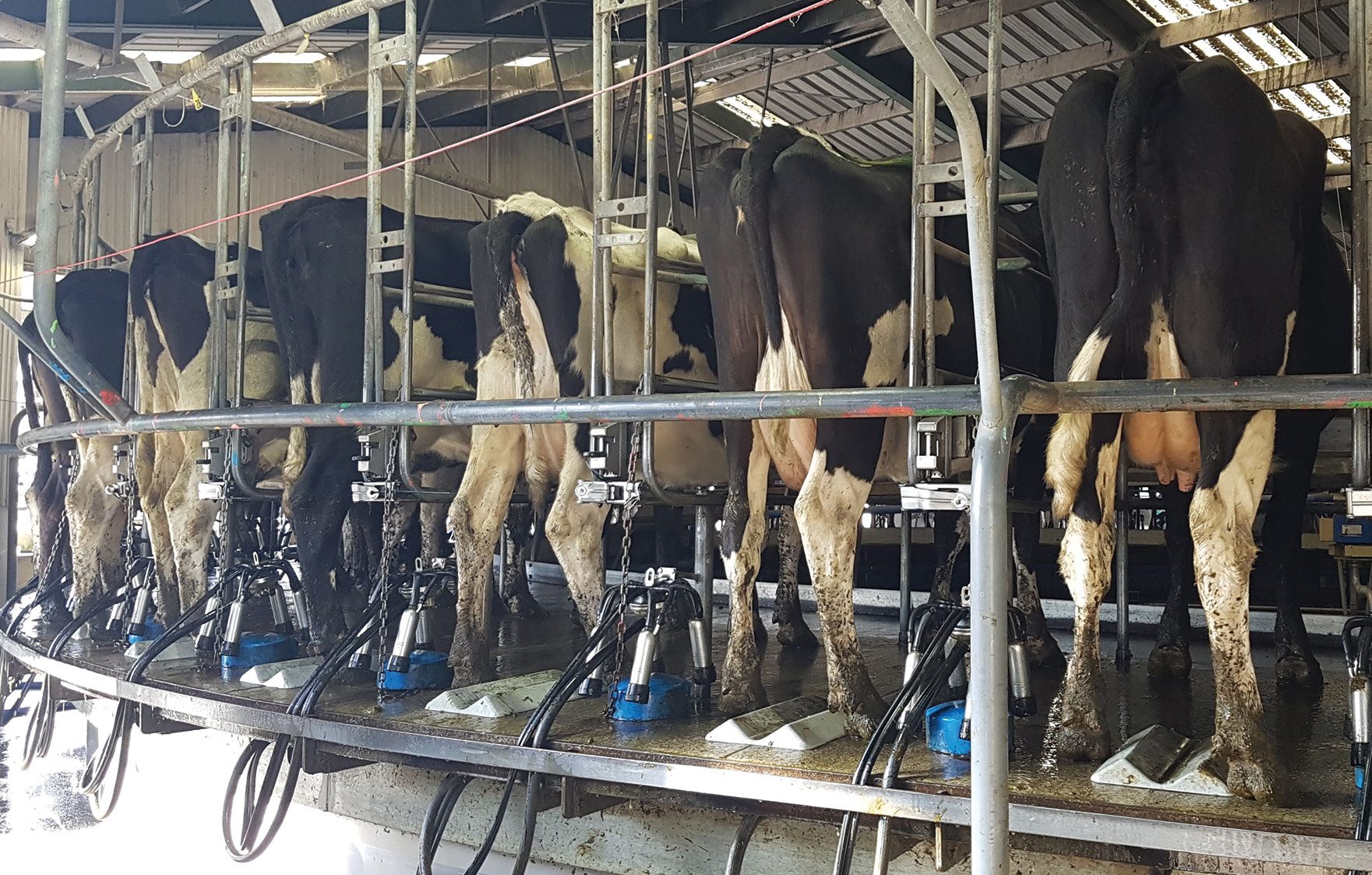Dry cow antibiotic therapy – just a piece of the puzzle
What are dry cow antibiotics actually for? By Lisa Whitfield.


By the time you read this, most will have completed your annual dry cow consultation with your vet. You’ve gathered your data – herd test results, clinical mastitis records and bulk tank cell count data, made the trip to town, and had a discussion about which cows will receive dry cow antibiotics this year.
What are dry cow antibiotics actually for?
Dry cow therapy has long been touted as the cure-all for herd cell count issues. Every year, you give your herd antibiotics at drying off and then start the new season in a better position than you ended. Over the subsequent season, the cell count may dip towards peak milk, but then a steady rise begins and you end the season in the same position as last season. Out comes the dry cow antibiotics again.
This pattern of dry cow therapy ‘fixing’ cell count issues is a common misconception – the long-acting, high-dose antibiotics are actually doing very little for many of the cows, but as you don’t have detailed data available, the story looks plausible on paper.
Dry cow antibiotics have a specific role – to target existing Staph aureus infections in the udder. Staph is adept at evading the immune system, more so than other bacteria, therefore Staph aureus is more difficult to cure. The prolonged action of dry cow antibiotics provides more opportunity for Staph aureus to be exposed to antibiotics – much more opportunity than can be afforded during lactation. In the average New Zealand herd, only 10 to 15% of cows will have Staph infections.
The dry period is when the body gets a prolonged break from the pressure of producing milk, to clean up wayward bacteria in the udder.
Bacteria such as Strep uberis and E.coli stimulate strong immune responses and therefore cows readily self-cure from subclinical infections with these bacteria, without the need for antibiotics. Anything which is not a bacteria, such as fungi, yeast and algae (Protatheca), are not treated by antibiotics in any case.
The udder also harbours CNS bacteria (Coagulase-negative Staphylococci, or non-aureus Staph). This group of bacteria are normal flora of the udder. CNS constitutes up to 80% of bacteria isolated from subclinical milk cultures. CNS bacteria are the ones impacted most by dry cow antibiotics, causing a brief reduction in cell count the following season. Targeting normal udder flora is false economy however – they rarely cause clinical mastitis and generally only result in mild increases in cell count. The cell count reduction caused by treating them is only temporary, as normal bacterial flora re-establish readily.

quick fix to improve cell count issues.
Lowering your cell count
It is a common goal to want to lower your bulk tank cell counts – however, turning this into reality is something many fail to achieve.
Mastitis is a dynamic, ever-changing beast – there is no quick fix to improve cell count issues. It requires attention to detail, vigilance, high standards, work ethic and takes time throughout the season. Cell count is the outcome of an inflammatory response in the udder – it is the immune system throwing into battle its soldiers to fight off things which shouldn’t be there. When you understand this, risk factors for mastitis make sense.
Protect your heifers – your heifers are the future of your herd, and they are the best source of ‘clean’ cows. If you regularly experience heifer mastitis, internal teat sealants are the most effective way to stop this from happening.
Be wary of what bought-in cows might harbour – some of the worst cell count issues I have dealt with have been attributed to farms which have brought in the problem – buying cows infected with Staph aureus. If you need to top up cow numbers, consider milk sampling the line or make sure you have cell count data for the line.
Catch problems in the colostrum mob before they are put into supply – use RMT and milk cultures to check quarters and deal with new infections before they affect the bulk tank.
In-shed behaviour – changing habits – don’t like wearing gloves when milking? Like to hose the rails while the cows are being milked or exiting? Small details have a big impact on the level of infection cows must fight off, but these are habits people struggle to change. These habits hold people back from lowering their cell count.
Teatspray – perhaps the most effective but most neglected on-farm practice affecting the bulk tank and reducing the spread of mastitis bacteria through the herd. Poor teat coverage, low concentrations and low volume are all incredibly common issues.
Be proactive – strip the herd when it’s needed to find clinical cases as soon as possible – not only does this protect the bulk tank but it means a better outcome for the cow.
Manage the environment as best as possible – you can’t control the weather, but you can control where your cows are each day. Don’t force cows to rest or wait in wet, muddy conditions.
Culling – many farmers cull the wrong cows because they don’t have good information available. If you are debating which cows to cull, milk cultures will allow you to make an informed decision. Cows prone to clinical mastitis are a good choice, but with high cell count cows, target those with major pathogens and multiple quarters infected. Dry cow antibiotics have a role in mastitis management but are only a piece of the puzzle. Don’t rely on them to ‘fix’ your mastitis issues – change the focus of your efforts to how you operate during the season.
- Lisa Whitfield is a Production Animal veterinarian in the Manawatu




